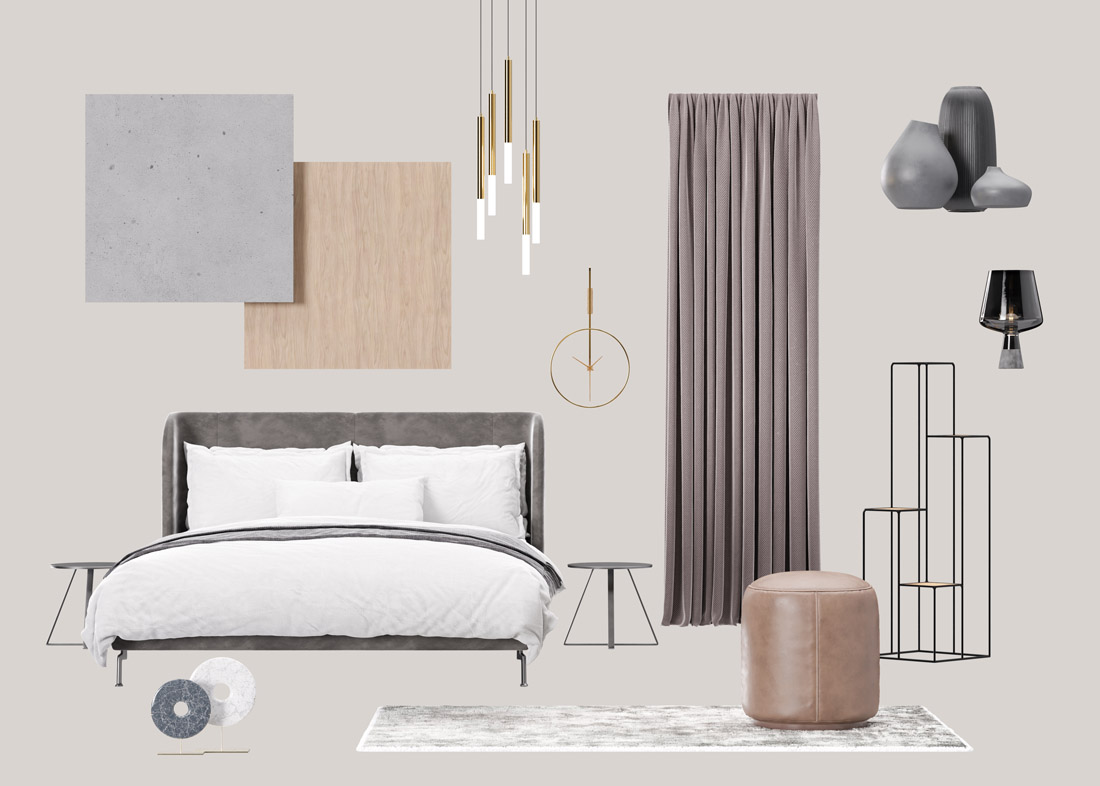How to create an effective mood board!

Starting an interior design project can be daunting, especially if you’re a novice. A mood board is a useful tool to get the creative process started and one professional interior designers rely on regularly. Here, Brookhaven’s Audrey Frances Doty, principal designer at the residential and commercial interior design firm Audrey Frances Design, shares the ins and outs of creating mood boards.

Why are mood boards important?
Mood boards help clarify and communicate the overall vision for a space. By seeing visuals placed together, my clients and I can determine whether the concept is aligned with the intended atmosphere, style or function of the space. They also help avoid unnecessary revisions and enable us to make faster decisions, knowing what works and what doesn’t within the scope of the design.
Where should one look for mood board inspiration? Where do you look?
A piece of artwork or a photograph can serve as the centerpiece of your mood board. It’s fairly common for my clients’ artwork to be the inspiration. The colors, shapes and overall vibe of a painting or photograph can often set the mood for the entire room. Colors found in nature are another source of inspiration for me. It may be the warm tones of a sunset, the cool tones of the ocean or the calming greens of trees that steer the direction of the design theme. Also, incorporating the rich textures of wood and stone can provide a great starting point for designing a space that feels grounded and organic.
Any apps you’d recommend to get started?
One of my favorite apps for mood boards is Canva. It has beautiful templates you can build from, or you can create your own. The app is easy to work with, and it helps me create beautiful collages of visuals for the foundation of the design process.
What’s the ultimate goal of a mood board?
Overall, mood boards should display a feeling or emotion you want to evoke in the space. It could be an energizing workspace or a calming spa-like bathroom. When creating mood boards, focusing on the intended emotional response helps guide my color choices, textures and furniture.
AUDREY FRANCES DESIGN
audreyfrancesdesign.com
@audreyfrancesdesign
Giannina S. Bedford is multi-faceted writer and editor. Her work covers design, travel, food and business. She’s penned Simply Buckhead’s home feature since inception and held a variety of editorial roles at the magazine. Her freelance work has appeared in Condé Nast Traveler, USA Today, Virtuoso Life, Hemispheres and TravelandLeisure.com. She also contributes regularly Atlanta Business Chronicle. Fluent in Spanish, Giannina was born in Miami and grew up in Brazil, Chile, Hawaii and Australia. She currently lives in Dunwoody with her two kids and husband.











